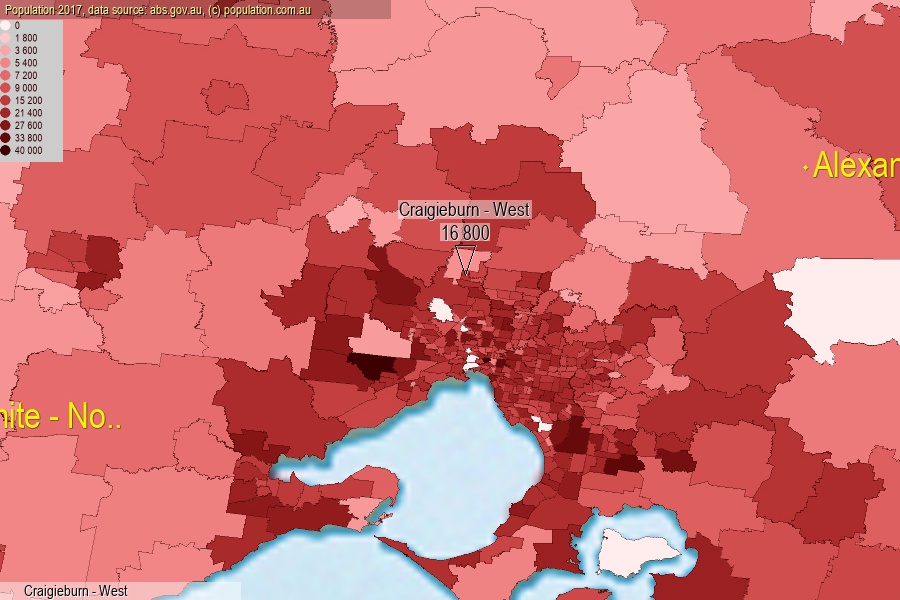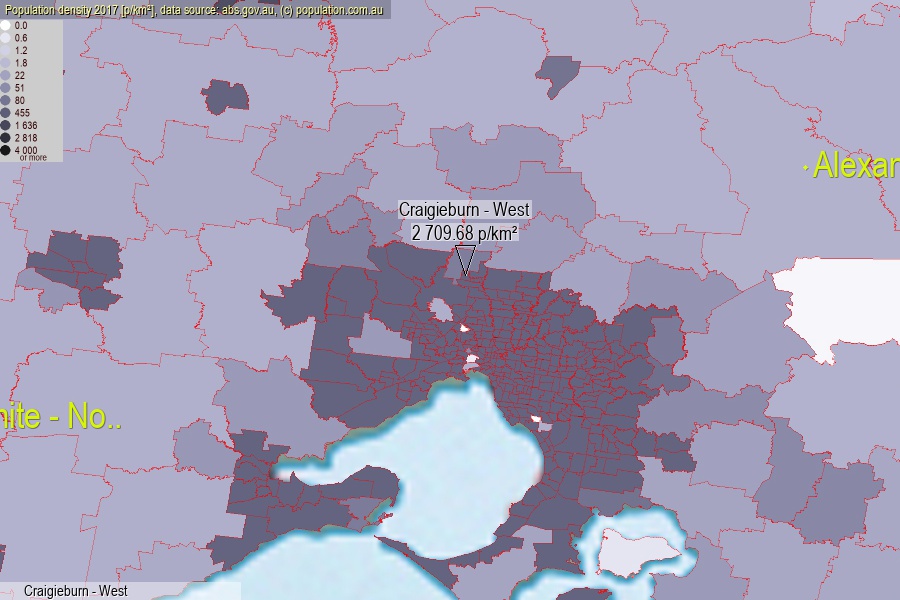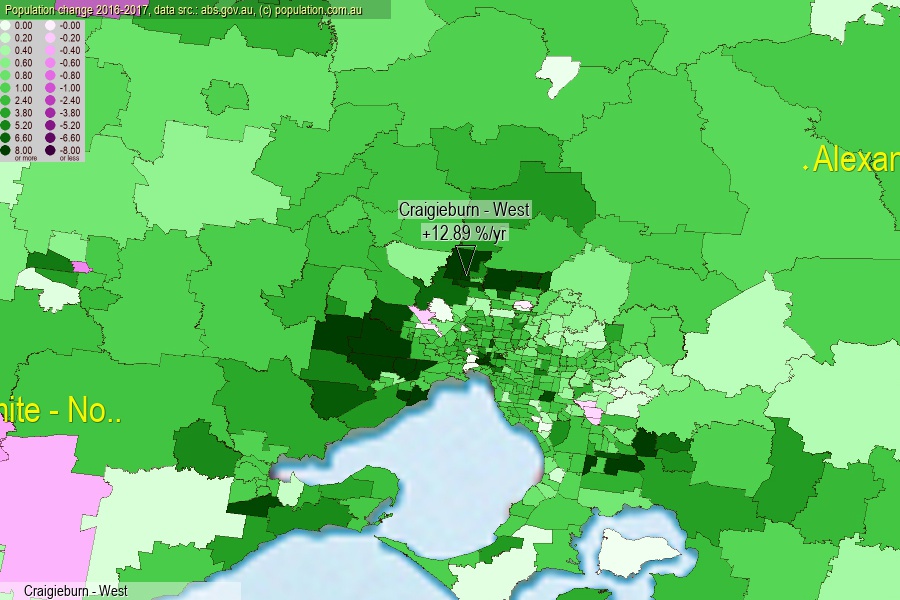 population.com.au
population.com.auLast official estimated population of Craigieburn - West (as Statistical Area Level 2) was 16 800 people (on 2017-06-30)[2]. This was 0.07% of total Australian population and 0.261% of VIC population. Area of Craigieburn - West is 6.20 km², in this year population density was 2 709.68 p/km² . If population growth rate would be same as in period 2016-2017 (+12.89%/yr), Craigieburn - West population in 2025 would be 44 309. [0]



Click to enlarge. Craigieburn - West is located in the center of the images.
Population [people], population density [p./km²] and population change [%/year] [2]
View borders » (new window) [4]
[2001-2002] -3.64 %/Yr.
[2002-2003] +1.89 %/Yr.
[2003-2004] +11.11 %/Yr.
[2004-2005] +135.00 %/Yr.
[2005-2006] +61.70 %/Yr.
[2006-2007] +173.68 %/Yr.
[2007-2008] +102.88 %/Yr.
[2008-2009] +67.77 %/Yr.
[2009-2010] +53.06 %/Yr.
[2010-2011] +30.64 %/Yr.
[2011-2012] +43.00 %/Yr.
[2012-2013] +33.95 %/Yr.
[2013-2014] +25.93 %/Yr.
[2014-2015] +20.34 %/Yr.
[2015-2016] +20.72 %/Yr.
[2016-2017] +12.89 %/Yr.
[0] Calculated with linear interpolation from officially estimated population
[1] Read more about SA2 and Australian Statistical Geography Standard (ASGS) on abs.gov.au
[2] Population data from Australian Bureau of Statistics (Population and density: 2017; change: 2016-2017)
[3] Digital Boundaries: Australian Statistical Geography Standard (ASGS) 2016.
[4] Border coordinates are simplifyed using Ramer-Douglas-Peucker algorithm.